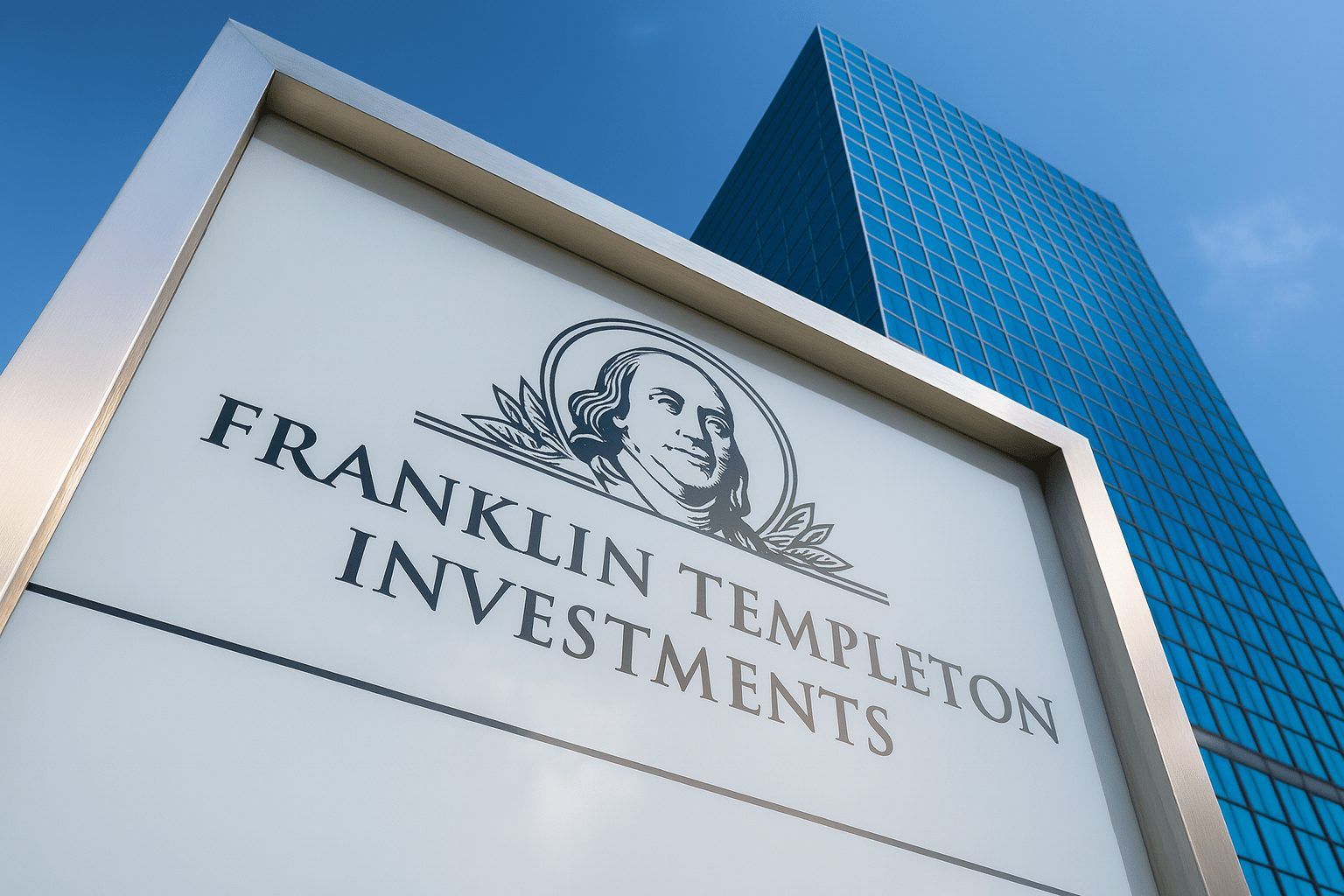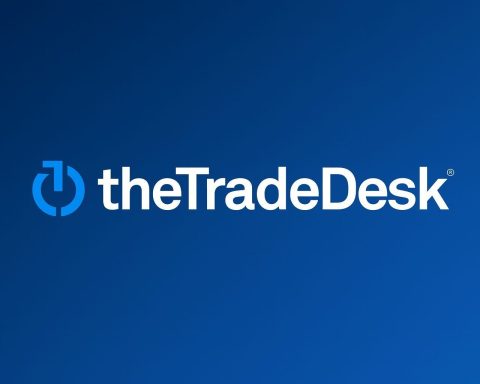As of Sunday, November 23, 2025, Templeton Emerging Markets Fund (NYSE: EMF) sits at the intersection of three big stories: a red‑hot year for emerging‑market equities, a still‑wide discount to net asset value (NAV), and a generous—but complex—distribution policy.
Because US markets are closed today, the most recent trading data are from Friday, November 21, 2025. EMF closed at $16.56, down 0.42% on the day, with a 52‑week range of $11.14–$18.01, a market cap around $251 million, and a trailing dividend of $0.88 per share, implying a yield of ~5.3% at Friday’s close. [1]
On the fund sponsor’s own numbers, EMF has delivered a YTD total return at market price of about 53% and ~44–45% at NAV in 2025, meaning the share price has outpaced the underlying portfolio as the discount has narrowed. [2]
At the same time, there are no new EMF‑specific press releases or SEC filings dated November 23, 2025. The story today is about where the fund stands right now rather than any breaking corporate announcement.
1. EMF stock today: price, valuation and discount snapshot
Latest quote (as of close 11/21/2025) [3]
- Share price: $16.56
- Daily move (Friday): –0.07 (–0.42%)
- Day’s range: $16.17–$16.59
- 52‑week range: $11.14–$18.01
- 1‑year price change: roughly +32%
- Market cap: ≈ $251 million
- Shares outstanding: ≈ 15.17 million
- Trailing EPS: about $3.38 per share
- P/E ratio (TTM):
- Trailing distribution: $0.88 per share
- Dividend/distribution yield: ~5.3%
From the closed‑end fund perspective, discount and NAV are key:
Franklin Templeton’s own page for EMF (data as of November 13, 2025) shows: [6]
- NAV: $19.54
- Market price: $17.48
- Premium/discount:–10.54% (i.e., shares trading at a 10.5% discount to NAV)
- YTD total return at NAV: 44.42%
- YTD total return at market price: 52.97%
- Distribution rate at NAV: 4.50%
- Distribution rate at market: 5.03%
CEFConnect’s independent closed‑end fund data (as of November 21, 2025) paint a consistent picture: [7]
- 12‑month total return on NAV: 39.71%
- Annualized distribution rate on NAV: 4.71%
- Effective leverage: only ~1.8%
- Average discounts:
- 6‑month average: –11.70%
- 1‑year average: –13.14%
In other words, EMF remains a classic “discounted EM equity” play: a small, lightly levered closed‑end fund with a double‑digit discount and returns that have strongly outpaced core emerging‑markets benchmarks in 2025.
2. What’s new on November 23, 2025 – and what isn’t
No fresh EMF‑specific press release today
A sweep of:
- Franklin Templeton’s press‑release page, [8]
- Business Wire’s EMF releases, [9]
- closed‑end fund news feeds and EMF‑tagged headlines [10]
shows no new EMF‑specific announcements dated November 23, 2025.
The most recent fundamental news items for EMF are:
- September 29, 2025 – Notification of sources of distributions (Business Wire) [11]
- July 21, 2025 – Franklin Templeton Closed‑End Funds announce share repurchases for Q2 2025 [12]
- February 26, 2025 – Board initiatives intended to reduce the fund’s discount, including a managed distribution plan, fee cut and buyback authorization. [13]
But data and technical analysis have been updated
While there’s no new fundamental announcement today, several data and technical‑analysis providers have updated their views around the latest close:
- StockInvest.us (update dated Nov 21, 2025) labels EMF a “hold candidate” after a 0.42% drop on Friday and a 5.15% decline over the last 10 trading days. Technical signals are mostly negative, with both short‑ and long‑term moving averages flashing “sell.” However, EMF is oversold on RSI‑14 (≈23), and their model projects a 13% price rise over the next three months, with a 90% probability that the price ends up between about $18.74 and $20.81. [14]
- Stock Traders Daily published a technical deep‑dive on November 16, 2025, highlighting “neutral” near‑ and mid‑term signals but a stronger long‑term positive bias. They describe a mid‑channel oscillation, point to key levels around $16.65 (support) and $17.58 (resistance), and lay out both long and short trading setups around those thresholds. [15]
- CoinCodex’s quantitative model estimates that EMF could see a short‑term peak around $17.02 near November 23, roughly 2% above recent prices, before drifting toward the high‑$16s into late November. These forecasts are purely model‑based technical projections, not fundamental research. [16]
None of these services is issuing a clear “all‑in” or “get out” signal. The broad theme is:
Short‑term momentum has cooled and the fund looks technically weak/oversold, but the longer‑term trend and discount‑driven upside still appeal to some quant and trading models.
3. The macro backdrop: 2025 is a comeback year for emerging markets
EMF doesn’t exist in a vacuum. It’s essentially an active, concentrated EM equity portfolio wrapped in a closed‑end fund structure, so the macro story for EM matters a lot.
Big picture: EM outperformance in 2025
- Hermes Investment Management notes that emerging markets have delivered strong returns in 2025, with the MSCI Emerging Markets Index up roughly 25% year‑to‑date, beating both developed markets and the US. [17]
- The iShares MSCI Emerging Markets ETF (EEM) shows a YTD NAV return around 27–33% (depending on the cut‑off date in October and November), corroborating that EM has decisively bounced this year. [18]
Franklin Templeton’s own “Emerging Markets Insights: AI and beyond” report points out that: [19]
- EM equities gained about 4.2% in October alone,
- supported by the second US Federal Reserve rate cut of 2025 and
- easing US‑China tensions late in the month.
So EMF is riding a structurally strong year for the asset class, with cyclical tailwinds from Fed easing and AI‑driven tech demand.
Flows are still cautious, which matters for discount plays
It hasn’t been a straight‑line love affair, though:
- The Institute of International Finance data, summarized by Reuters, show foreign investors added around $26.2 billion to EM debt and equity in September—the lowest monthly inflow since May, with notable outflows from Chinese stocks. [20]
- Another Reuters piece notes that global equity funds have seen nine straight weeks of inflows, but the market remains volatile as investors juggle Fed‑cut expectations, AI valuation worries and geopolitical tensions. [21]
Strategists are increasingly constructive on EM:
- Goldman Sachs earlier this year raised its 12‑month target for the MSCI EM Index, citing the AI‑driven rally in Chinese equities and the likelihood of that momentum spilling over into China‑sensitive EMs. [22]
- In October, Citigroup upgraded EM to “overweight” and explicitly highlighted Taiwan, Korea and China as beneficiaries of the AI theme, noting that EM equity inflows are still subdued and could pick up from here. [23]
That’s directly relevant to EMF, whose portfolio is heavily tilted toward those exact markets.
4. Inside the portfolio: what EMF actually owns
CEFConnect’s latest portfolio snapshot (as of September 30, 2025) shows that EMF: [24]
- Holds about 94 stocks,
- Has modest turnover of ~17%, and
- Is heavily tilted toward growth‑oriented sectors and North Asia.
Top sector weights
Approximate sector mix:
- Technology: ~35.5% of the portfolio
- Financial services: ~21.7%
- Communication services: ~14.0%
- Consumer cyclical: ~11.4%
- Smaller allocations to industrials, health care and defensive sectors
In super‑sector terms, EMF is over 56% “Sensitive” sectors (tech, communication, etc.) and around 36% “Cyclical”, with a comparatively small defensive sleeve. [25]
Country allocation
By country (equity exposure, as of 9/30/2025): [26]
- Taiwan: ~21%
- China (incl. Hong Kong): ~22% combined
- South Korea: ~17%
- India: ~11%
- Brazil: ~8%
- Netherlands: ~6% (largely via Prosus)
- Smaller weights to Mexico, Thailand, South Africa, Indonesia, Chile, Turkey, etc.
This lines up cleanly with Franklin Templeton’s own commentary that China and South Korea are among the standout EM opportunities in 2025, as they highlight in their “From if to where: which emerging markets are rebounding” note. [27]
Top holdings
CEFConnect lists EMF’s top 10 holdings as of September 30, 2025, including: [28]
- Taiwan Semiconductor Manufacturing Co. (TSMC) – ~14.5% of assets
- Prosus NV – ~5.8%
- SK Hynix – ~5.3%
- Samsung Electronics – ~3.9%
- Alibaba Group – ~3.7%
- ICICI Bank – ~3.4%
- Tencent Holdings – ~3.2%
- Grupo Financiero Banorte, MediaTek, Hon Hai Precision among others
So buying EMF is not equivalent to buying the entire EM index. It’s a conviction‑weighted portfolio tilted toward big EM technology and internet names in Asia, plus selective financial and consumer exposures.
5. The discount‑reduction plan: distributions, fee cut and share buybacks
In February 2025, EMF’s Board approved a three‑pronged plan explicitly aimed at reducing the fund’s discount to NAV: [29]
- Managed distribution plan
- EMF will pay quarterly distributions of $0.22 per share (annualized $0.88).
- The first such payment was scheduled around March 31, 2025.
- Management fee reduction
- The investment management fee was cut by 5 basis points, effective March 1, 2025.
- Share repurchase program
- EMF is authorized to repurchase up to 10% of its common shares via open‑market transactions when they trade at a discount.
The logic: a steady, visible cash distribution, lower ongoing fees, and buybacks at a discount can all help narrow the gap between market price and NAV—or at least reward shareholders while they wait.
Have buybacks actually happened?
Yes. Several press releases and news items show the program being used:
- In Q4 2023, EMF repurchased 129,326 shares, part of broader Franklin Templeton CEF buyback activity. [30]
- For Q2 2025 (April 1 – June 30), EMF bought back 52,676 shares, according to Business Wire and Investing.com coverage of Franklin Templeton’s closed‑end funds. That period also noted EMF trading near its 52‑week high and showing a ~25% six‑month return at the time. [31]
With about 15.17 million shares outstanding, the Q2 2025 buyback alone amounts to roughly 0.35% of the share base—modest, but accretive when done at a double‑digit discount. [32]
Discount behavior in 2025
CEFConnect’s discount statistics show EMF has historically traded at low‑teens discounts: [33]
- 6‑month average discount: ~–11.7%
- 1‑year average discount: ~–13.1%
However, returns at the market price have outpaced NAV in 2025:
- Franklin Templeton’s own YTD numbers (to 11/13) show NAV total return of ~44.4% vs ~53.0% at market, implying the discount has narrowed somewhat this year. [34]
The buybacks, strong performance, and managed distribution plan all likely contribute to that gradual discount compression, even though EMF still trades meaningfully below NAV.
6. Distribution quality: how much is “real” income vs return of capital?
A key nuance for EMF—crucial for income‑focused investors—is that its relatively high distribution is not purely “yield”.
The September 29, 2025 “Notification of Sources of Distributions” broke down the $0.22 quarterly payout (paid September 30, 2025) as follows: [35]
- 31% from net investment income
- 19% from net realized short‑term capital gains
- 0% from long‑term capital gains
- 50% from return of capital (ROC)
For the 2025 fiscal year‑to‑date (through June 30, 2025), the cumulative distribution of $0.9514 per share was estimated to be: [36]
- 11% net investment income
- 46% net realized short‑term gains
- 0% net realized long‑term gains
- 43% return of capital
The fund explicitly cautions that: [37]
- EMF has distributed more than its income and net realized capital gains,
- Therefore a portion of distributions is ROC, and
- Shareholders “should not draw any conclusions about the Fund’s investment performance” from the distribution level alone.
Why this matters:
- ROC can be benign (e.g., tax‑efficient distribution of previously realized gains) or it can represent giving investors back their own capital if portfolio returns don’t keep up with the payout.
- For a discount CEF like EMF, a managed distribution plan with some ROC can support the share price by attracting income buyers, but it doesn’t guarantee the underlying NAV is compounding at the same rate as the cash yield.
Investors who care about sustainable income vs headline yield should look at NAV total return and distribution composition rather than the yield number in isolation.
7. Performance check: EMF versus emerging markets in 2025
Putting it all together:
- EMF price return YTD (as of 10/31/2025): about +53.8%
- EMF NAV return YTD: about +45.1% [38]
- MSCI EM Index YTD (approximate): around +25% based on institutional commentary and index data. [39]
So EMF has significantly outperformed the broad EM index on both NAV and share‑price bases in 2025. A few reasons why:
- Overweight AI‑linked North Asia tech
- Big stakes in TSMC, SK Hynix, Samsung, Alibaba, Tencent and other tech/platform names have benefited from the global AI capex boom. [40]
- Active stock selection and country tilts
- EMF’s mix differs from MSCI EM, tilting more toward Taiwan, Korea and China, which strategists like Citi and Goldman have highlighted as key AI beneficiaries. [41]
- Discount narrowing
- EMF’s market price has risen faster than NAV, partly reflecting discount compression as the Board rolled out its distribution plan and buybacks. [42]
Of course, past performance is no guarantee of future results—a disclaimer Franklin Templeton and CEFConnect both hammer home. [43]
8. Key risks to keep in view
Anyone looking at EMF on November 23, 2025 should also weigh the risk side:
- Emerging‑market volatility
- The EM asset class is inherently volatile, with sensitivity to US rates, the dollar, trade policy, and local political risk. Recent Reuters coverage highlights how quickly sentiment can flip as investors reassess Fed cuts and AI valuations. [44]
- Concentration in North Asia tech
- EMF’s overweight in Taiwan, Korea and China and in semiconductor/platform names means it is tightly linked to the AI and electronics cycle—great on the way up, but potentially painful in any tech correction. [45]
- Discount risk
- Even with buybacks and a managed distribution plan, EMF has historically traded at a double‑digit discount. There is no guarantee that discount will continue to narrow; it can widen again in risk‑off markets. [46]
- Distribution sustainability and ROC
- The current payout is attractive, but as the Section 19 notices show, a large portion of distributions has come from short‑term gains and return of capital. If markets turn or realized gains dry up, the Board could adjust the payout, potentially impacting the share price. [47]
- Liquidity
- EMF’s average daily volume is modest (around 20k shares), with actual trading often below that. That’s enough for most retail investors but means larger orders can move the price. [48]
9. Who might EMF suit right now?
Without giving personal investment advice, EMF today (November 23, 2025) broadly looks like a fund that may appeal to investors who:
- Want active EM equity exposure with a concentrated tilt toward AI‑linked North Asia tech and financials; [49]
- Are comfortable with emerging‑market and tech‑sector volatility;
- Like the idea of buying EM assets at a persistent discount to NAV, recognizing that the discount may not close further; and
- Appreciate a ~5% distribution yield, while understanding that a substantial portion is likely to come from capital gains and return of capital rather than pure income. [50]
On the other hand, EMF is unlikely to be a fit for investors who need:
- Very stable, fully income‑covered distributions,
- High liquidity and tight spreads, or
- A broad, low‑cost, index‑tracking EM exposure (for which something like EEM or a similar ETF is more appropriate). [51]
10. Bottom line on EMF as of November 23, 2025
Summing up:
- No new EMF‑specific news dropped today, but the fund enters the final stretch of 2025 in remarkably strong shape, with NAV and price returns far ahead of the EM index. [52]
- Shares trade at around $16.56, implying a double‑digit discount to recently reported NAV, single‑digit P/E, and a distribution yield around 5%. [53]
- The Board’s managed distribution plan, fee reduction, and active buybacks are all designed to support shareholder value, and so far 2025 suggests they are having some effect on the discount. [54]
- At the same time, investors need to be comfortable with EM risk, AI‑and‑tech sensitivity, and the return‑of‑capital element in distributions. [55]
As always, anyone considering EMF should look at their own objectives, risk tolerance, tax situation and time horizon, and ideally cross‑check these facts with the latest official filings and a qualified financial adviser. This article is for information and news analysis only, not a recommendation to buy or sell EMF or any other security.
References
1. www.investing.com, 2. www.franklintempleton.com, 3. www.investing.com, 4. www.investing.com, 5. stockinvest.us, 6. www.franklintempleton.com, 7. www.cefconnect.com, 8. www.franklintempleton.com, 9. www.businesswire.com, 10. markets.chroniclejournal.com, 11. www.businesswire.com, 12. www.businesswire.com, 13. investors.franklinresources.com, 14. stockinvest.us, 15. news.stocktradersdaily.com, 16. coincodex.com, 17. www.hermes-investment.com, 18. finance.yahoo.com, 19. www.ftinstitutional.com, 20. www.reuters.com, 21. www.reuters.com, 22. www.reuters.com, 23. www.reuters.com, 24. www.cefconnect.com, 25. www.cefconnect.com, 26. www.cefconnect.com, 27. www.franklintempleton.co.uk, 28. www.cefconnect.com, 29. investors.franklinresources.com, 30. www.stocktitan.net, 31. www.businesswire.com, 32. www.investing.com, 33. www.cefconnect.com, 34. www.franklintempleton.com, 35. www.businesswire.com, 36. www.businesswire.com, 37. www.businesswire.com, 38. www.cefconnect.com, 39. www.hermes-investment.com, 40. www.cefconnect.com, 41. www.reuters.com, 42. www.cefconnect.com, 43. www.franklintempleton.com, 44. www.reuters.com, 45. www.cefconnect.com, 46. www.cefconnect.com, 47. www.businesswire.com, 48. www.investing.com, 49. www.cefconnect.com, 50. www.businesswire.com, 51. www.ishares.com, 52. www.franklintempleton.com, 53. www.investing.com, 54. investors.franklinresources.com, 55. www.businesswire.com










